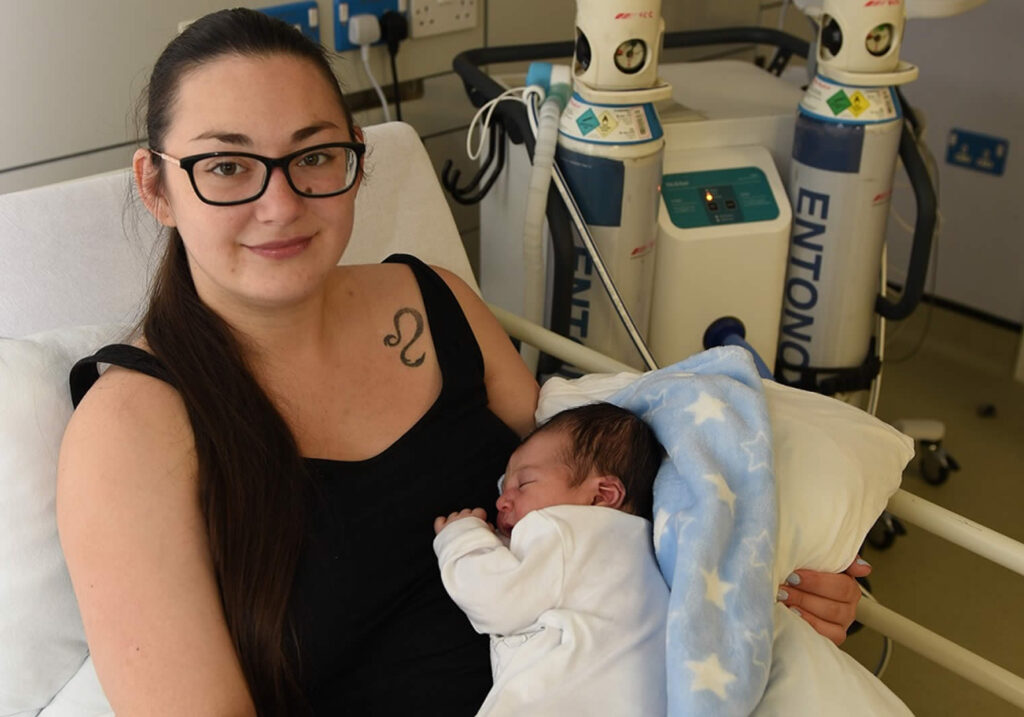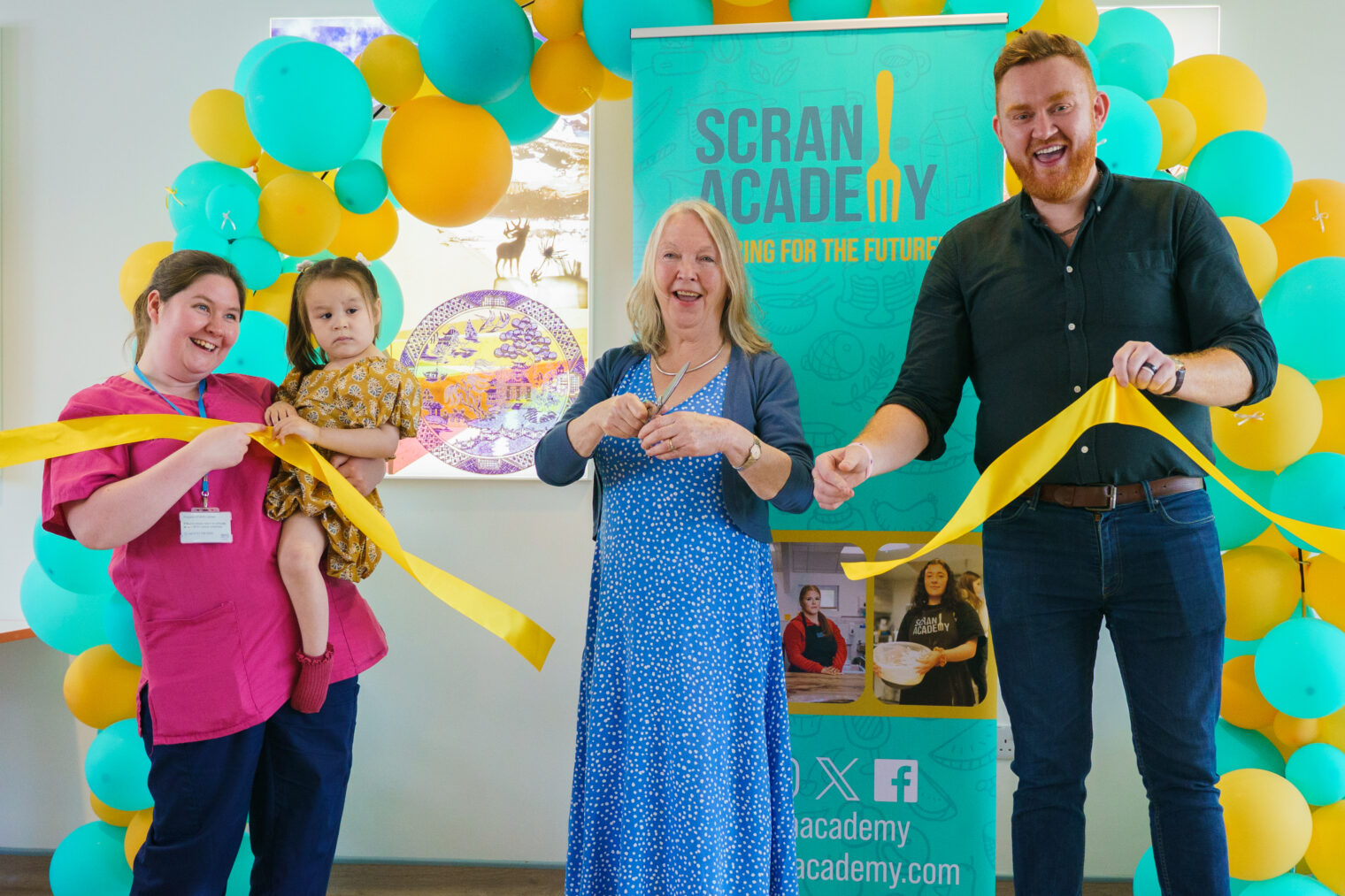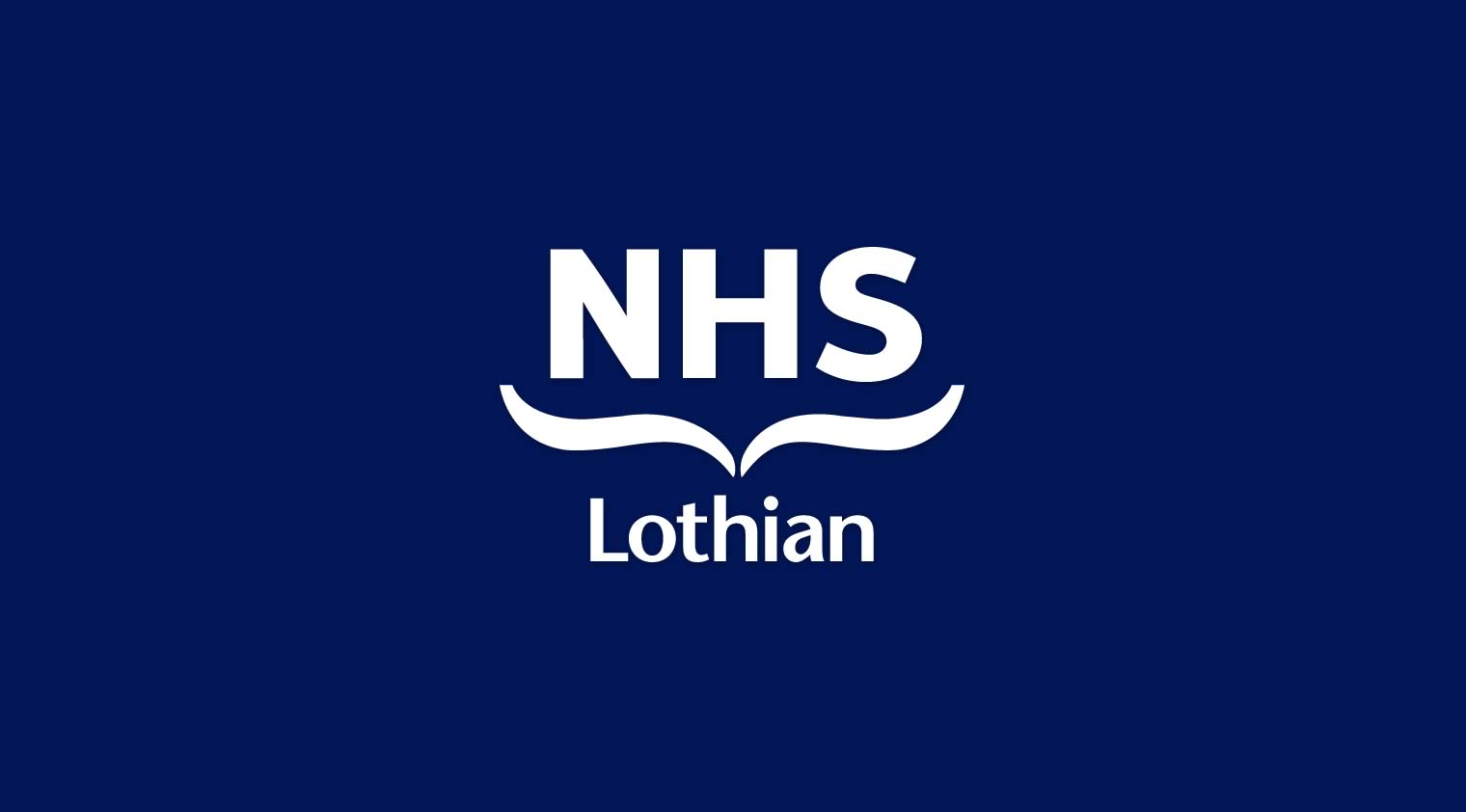NHS Lothian is the first health board in Scotland to use new technology during childbirth which delivers a benefit to the environment as well as helping mums in labour.
Agata Zajac, whose son Nathan was born at St John’ Hospital Livingston was one of the first mums in Scotland to give birth using the new machine which turns exhaled Nitrous Oxide, an environmentally damaging gas, into harmless Nitrogen and Oxygen.
Nitrous Oxide mixed with Oxygen, is commonly used to provide pain relief during labour. In NHS Lothian there are between 8000-9000 births per year, with 72% of people in labour making use of it at some stage. Unfortunately the gas creates carbon emissions which has a negative impact on the environment. It can also create potential risks to workers who may be exposed to low levels of this gas over long hours on a day-to-day basis.
Andrew Goddard, Consultant Anaesthetist in NHS Lothian, said: “We’re delighted to be the first hospital in Scotland to use this new machine and take a huge step forward in reducing our carbon footprint, tackling climate change and the risk to others.”
This pilot is part of a wider programme of work which also includes a pilot to recycle Anaesthetic Gases.
The new machine doesn’t affect the mother’s experience in anyway however by turning this gas into Nitrogen and Oxygen it removes the impact to the environment and the risk to others.
Andrew added: “We know that Nitrous Oxide has around 298 times the Greenhouse Gas Effect of Carbon Dioxide so have been very keen to support this new technology while ensuring the safety of mother and baby. This new technology will continue to allow people to benefit from this much favoured pain relief during labour, but without it’s clear and long-lasting damaging effects to the environment, whilst also keeping staff safe in the process.
“I and the whole team behind this project congratulate Agata in welcoming the safe arrival of her baby boy.”
Agata, who lives in Linlithgow, gave birth at 3:34am on Tuesday 5 October.
Agata said: “I had no idea the gas used in labour was so harmful to the environment or to staff long term. I think this machine is really important and am thrilled to finally meet baby Nathan, especially knowing that he’s one of the first babies to be born in Scotland in an environmentally friendly way whilst using this gas.”
This new machine will allow people to continue to access this easily accessible and effective form of pain relief in labour in a sustainable way, whilst not significantly contributing to environmental damage in the process, and whilst also protecting their visitors and the staff who look after them.
A second pilot that is also being run in NHS Lothian which is focused on reducing the harm caused by Anaesthetic Gases. These gases which include Sevoflurane and Desflurane are used to help keep patients unconscious during surgery. At present, like all hospitals, NHS Lothian relies on a system that safely removes patient exhaled anaesthetic gases from the anaesthetic room and operating theatre. However, these gases are then released directly into the atmosphere which has an additional greenhouse gas effect. This means that once released they continue to have a warming effect on the atmosphere for many years to come.
The team are now using a new technology which captures and stores these volatile anaesthetic gases, and offers the opportunity to later extract, purify and potentially reuse them which substantially reduces their greenhouse gas contribution. St John’s Hospital is also the first site in the UK to use this particular technology and the only current site in the UK to be using any form of this innovative technology.
Jane Hopton, Programme Director and Sustainability Lead for NHS Lothian said: “Addressing the environmental impact of medical gases is essential if the NHS is to achieve a pathway to Net Zero. This is a significant step forward for NHS Lothian and demonstrates the importance of clinical leadership in addressing Climate Change, ensuring that we take every opportunity to bring our models of care in line with our responsibility for the environment. We believe now this innovative technology exists, it is imperative to drive it forward across the whole of Scotland and the UK.”























